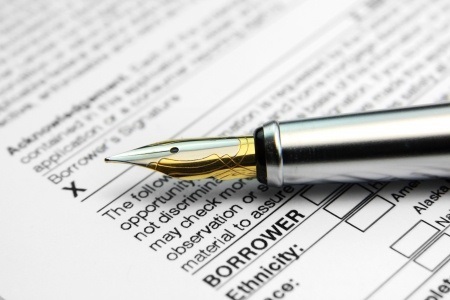What Changes Occurred In FHA And FNMA Rules During 2018?

The FNMA HomeReady Program
Those who are involved in the mortgage industry must keep updated on changes to FHA, and Fannie Mae (FNMA) loans. Since loan limits and other changes are often made annually, keeping up with these changes helps make sure consumers get the right information at the time of their application.
Many of the changes for 2018 are modest, but still impact existing, and new homeowners.
Changes To Loan Limit Amounts
FHA loan limits change on an annual basis as per the Housing and Economic Recovery Act of 2008. Using this, the FHA is required to base the insured mortgage amounts on 115 percent of median housing prices by county. While many counties in the United States did not see changes this year, 3,011 counties saw a change for loan applications submitted after January 1, 2018. These changes mean the upper loan limits in higher-priced markets increases to $679,650 and the lower limits are $294,515. These limits are for new home purchases and for refinancing existing FHA loans.
Another significant change which must be considered is what FHA or FNMA considers a conforming loan. In prior years, this amount was $424,100, it has now been increased to $453,100. This is important because for many homeowners, jumbo mortgages seem out of reach.
Changes To Down Payment Requirements
While FNMA did have a minimum requirement for down payment at five percent, FNMA and Freddie Mac are both offering three percent down payment programs in 2018. It is important to be aware that FNMA limits this program to those borrowers who intend to use the home as their primary residence. The following conditions must be met to qualify for the 97 percent loan to value program:
- The mortgage securing the property must be at a fixed rate
- The property must be a co-op, PUD, condo or other one-unit home.
- The property cannot be a manufactured home
- The borrower must intend to occupy the property as their primary residence
- One of the buyers cannot have owned a home in the last three years
- Loans must be equal to or less than $453,100
- Borrower’s credit score should be 620 or higher
FHA loans do require borrower to put down a minimum of 3.5 percent of their new mortgage. However, the also offer greater flexibility with credit requiring borrowers have a credit score of 580 and further allows the entire down payment to be gifted to the buyer. Borrowers with credit scores between 500 and 579 who can put down 10 percent are eligible for FHA mortgages.
Another important program FNMA offers is for first-time buyers. Specifically, the idea was to make owning a home easier for a larger market of buyers. This program offers some flexibility that standard FNMA loans do not offer including:
- Lower private mortgage insurance (PMI) rates
- 100 percent gifted down payments and closing costs
- 97 percent loan to value
- Co-borrower income may be used to qualify for a loan
- Household member income may be included, even if not a borrower
- Rental income and/or boarder income may help a borrower qualify
- Borrowers must complete a home buyer’s education course
These changes are significant for many borrowers and include some flexibility with income limits. Borrowers living in low-income areas face no maximum income limits. Borrowers in other areas cannot exceed 100 percent of the median income for the area.
Do Not Overlook FHA Streamline Refinance
Borrowers who have an existing FHA loan can take advantage of this program. Borrowers who changed jobs, have faced credit issues, or who have homes who lost some value may be able to refinance their home into a lower interest rate, or eliminate mortgage insurance premiums. To qualify, borrowers must be current on their mortgage payments, cannot have been late on their mortgage payments more than 30 days in 12 months, and have had their current mortgage for a minimum of 210 days. Because of this seasoning requirement, borrowers must have made six mortgage payments at the time of the refinancing.
Thanks to the flexibility of this program, borrowers need not worry about income verification, appraisals, or credit score. The refinance terms must benefit the borrower in a tangible way. For example, a borrower who currently has a six percent adjustable mortgage and now qualifies for a six percent fixed rate mortgage can demonstrate a tangible gain. Therefore, assuming they meet the other requirements, their mortgage would qualify for the streamline finance. For many borrowers, this could help significantly, particularly if their home has lost value, or they have suffered a temporary decrease in their income.
Mortgage programs change frequently making it imperative to verify all program requirements before presenting them to borrowers. Fortunately, FNMA and FHA are making home ownership attainable for more borrowers than ever before thanks to more flexible down payment options, credit scoring changes and increased loan limits.

 1) Do I have enough equity to get a mortgage?
1) Do I have enough equity to get a mortgage? Several generations ago, lenders required home buyers to have a 20 percent down payment in order to get a mortgage. While there were a few options out there for people who couldn’t save this substantial amount, the reality was that for the majority of people, the 20 percent down was a requirement.
Several generations ago, lenders required home buyers to have a 20 percent down payment in order to get a mortgage. While there were a few options out there for people who couldn’t save this substantial amount, the reality was that for the majority of people, the 20 percent down was a requirement. When you are purchasing a home, your lender may recommend you obtain a mortgage pre-approval before you find the home of your dreams. There are some benefits to being pre-approved before you find a home, but oftentimes, people confuse pre-qualifications with pre-approvals.
When you are purchasing a home, your lender may recommend you obtain a mortgage pre-approval before you find the home of your dreams. There are some benefits to being pre-approved before you find a home, but oftentimes, people confuse pre-qualifications with pre-approvals. Like credit cards or car loans, some mortgages allow borrowers to have co-signers on the loan with them, enhancing their application. However, a co-signer on a mortgage loan doesn’t have the same impact that it might on another loan. Furthermore, it poses serious drawbacks for the co-signer.
Like credit cards or car loans, some mortgages allow borrowers to have co-signers on the loan with them, enhancing their application. However, a co-signer on a mortgage loan doesn’t have the same impact that it might on another loan. Furthermore, it poses serious drawbacks for the co-signer.